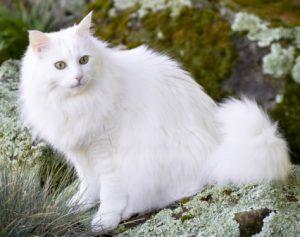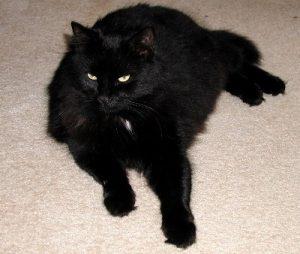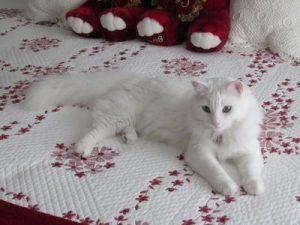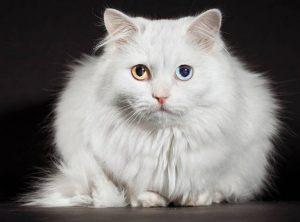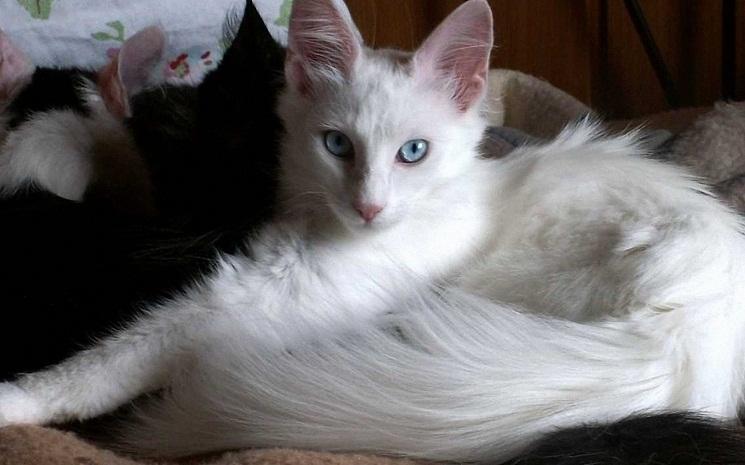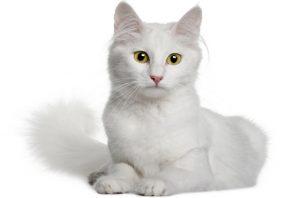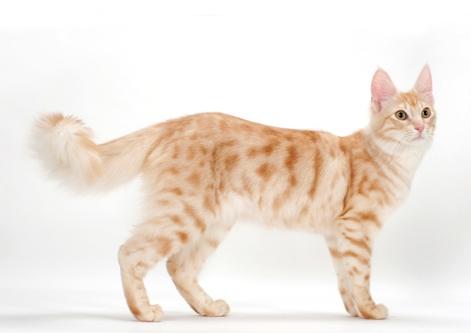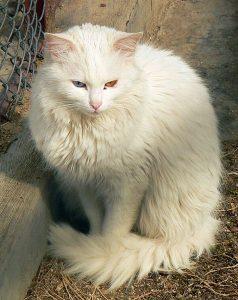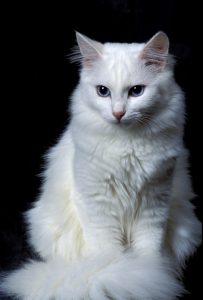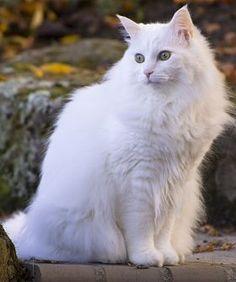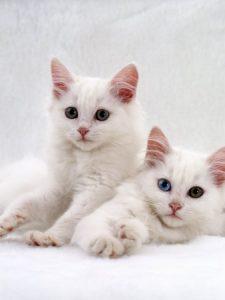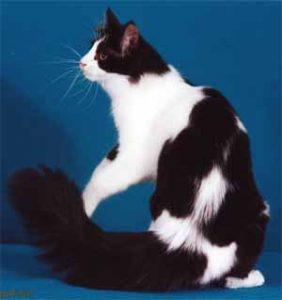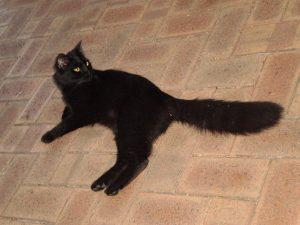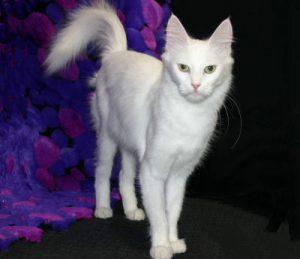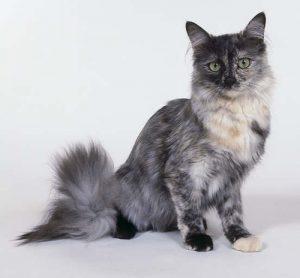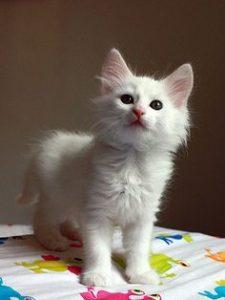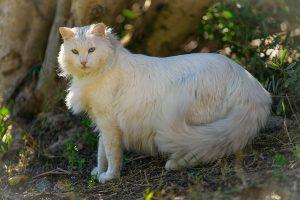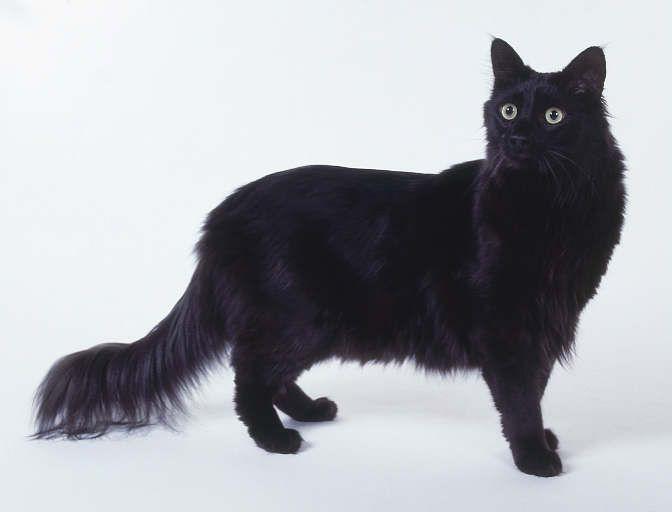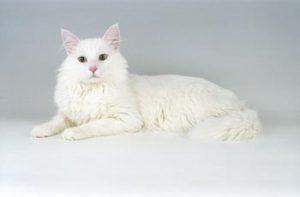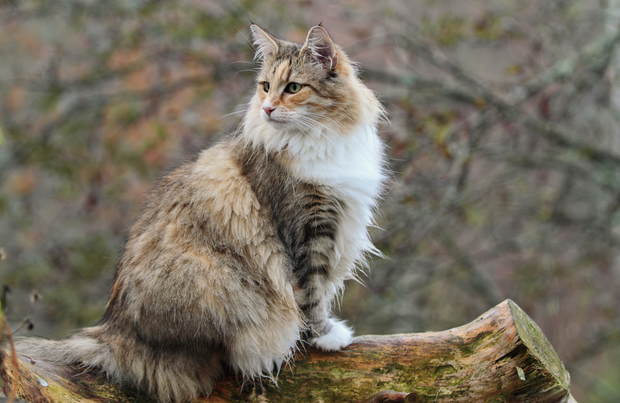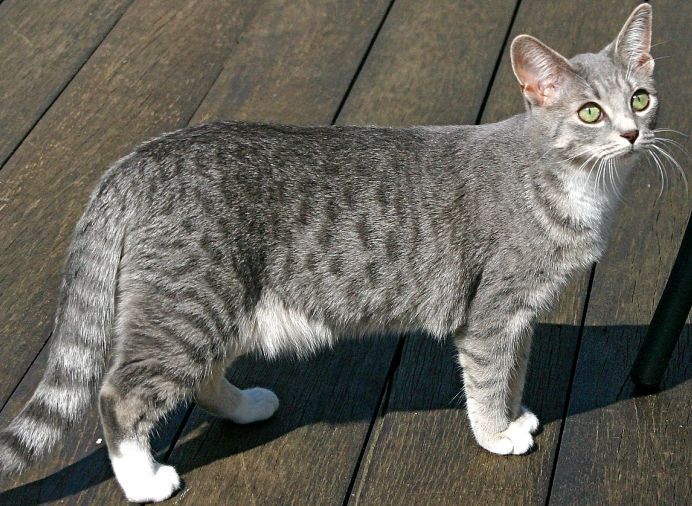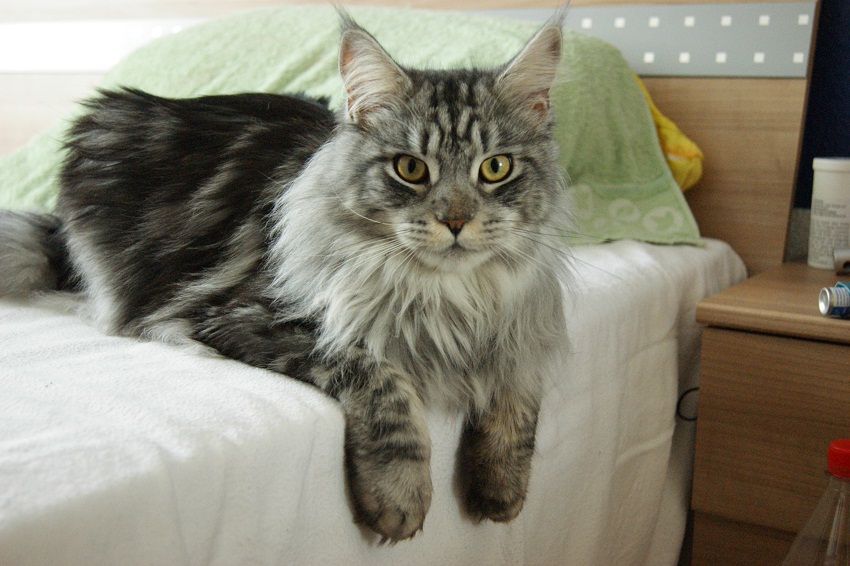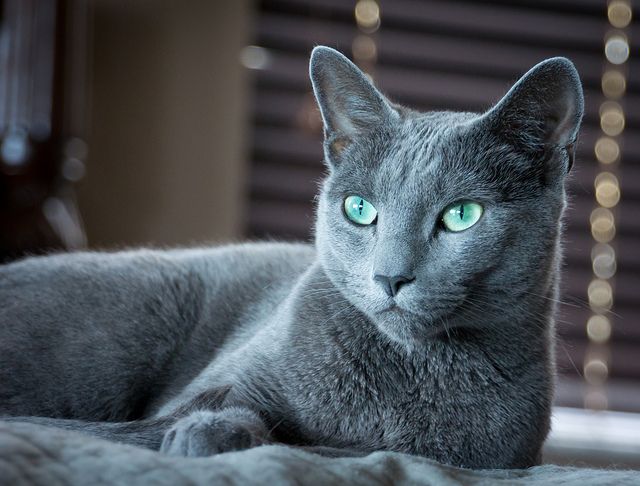Turkish Angora
Turkish Angora, originating in Ankara of central Turkey, is said to be one of the ancient domestic natural feline breeds. Being referred to as the Ankara or Angora cat they possess an elegant body stature. Often compared to a ballerina due to its graceful movements, its playful, affectionate and intelligent disposition makes it a preferred home pet.
Quick Information
Physical Appearance & Size
| Body Type: | Small to medium |
| Physical Description: | Wedge-shaped head, large pointed ears, long hind legs, round paws and a fluffy plumed tail. |
| Height: | 8 to 10 inche |
| Weight (Size): | 5 to 12 pounds, though male cats may weigh even more |
| Litter Size: | 4 |
Colors & Patterns
| Coat Type: | Soft, long, silky coat with a shimmer |
| Color: | White and other solid colors like black, cream, blue excepting pointed, lavender and chocolate as it denotes crossbreeding |
| Pattern: | Variety of patterns like tabby, calico, tabby-white, tortoise shell |
| Eyes: | Almon-shaped with varying colors like green, blue, amber and yellow, or even odd-eyed ( Heterochromia: each eye of a different color like a combination of amber and blue or blue and green) |
Other Characteristics
| Other Names: | Angora, Ankara |
| Average Life Span/ Life Expectancy: | 12 to 18 years |
| Temperament: | Intelligent, playful, witty, curious, active, affectionate |
| Lap Cat: | No |
| Shedding: | Minimal |
| Vocalization: | Moderate |
| Good with Children: | Yes |
| Hypoallergenic: | Yes |
| Country: | Turkey |
| Competitive Registration/ Qualification: | CFA, TICA, FIFe, ACFA/CAA, CCA-AFC |
History
A member of the African wild cat family, this breed earned its name from the city of its origination, Ankara (previously known as Angora).
They are said to be the ancestors of the Manul or Pallas cat. However, there are contradictions regarding the same as the Pallas are aggressive while the Angoras are extremely affectionate.
They may have been the first of the long haired breeds to be imported into France and Britain in the latter part of the 16th century from Asia Minor and Persia.
At the beginning of the 20th century, the Turkish Angora were extensively used for the breeding program to improve the Persian cat’s coat. This initiative caused them to lose their identity as a distinct breed, with all the long-haired felines categorized as Angoras for several years.
For the purpose of treasuring this breed, the Ankara Zoo undertook a breeding program for preserving the white purebred Angora cats. Though imported to the United States in 1954, the white Angoras were registered by the Cat Fanciers Association (CFA) In 1968 and acknowledged as a championship breed in 1973. The colored variations gained acceptance in 1978, with most registries of North America accepting the Turkish Angora in varied colors (black, red, cream, blue) and patterns (tortoise shell, spotted tabby, bicolor). Breeders are also working towards developing Angoras of smoke and other shaded patterns.
Striking Personality Traits
- High level of intelligence
- Good with family members and guests
- Can be inclined to a particular family member
- Desires for attention but does not like being held for more than a few minutes
- Gets bored when left alone for an extended period
- Loves climbing doors and lockers
- Has a dog-like curiosity
- Gets along well with other cats and cat-friendly dogs, though might be assertive
Who is the Turkish Angora good for
- Elderly people looking for a gentle, affectionate cat to give them full-time company.
- Well-behaved kids who need a playmate.
- Cat lovers, who would enjoy giving them a joy ride on their shoulders or a cozy snuggle in their bed
- Households needing an entertaining cat to amuse them with its delightful antics.
- People on the lookout for a cat with dog-like traits.
- Those who have ample time to give it sufficient care and attention.
- Owners on the look out for an elegant and intelligent cat to appear in shows and competitions.
Care
The long, silky, shimmering coat of the Turkish Angora sheds less, thus needing a bi-weekly combing only using a slicker brush or a metal comb with a fine tooth for removing dead hair. However, being seasonal shedders, the brushing frequency needs to be raised during spring and summer for preventing hairballs.
Bathing your pet once in every 2 to 3 months or at a lesser interval for the white breeds would ensure a clean coat. Most of them have an immense love for water and would have a great time during the bathing sessions.
Follow other hygiene measures like brushing its teeth once in 7 days using a vet-approved paste, trimming its nails in every few weeks, wiping its ears with a damp cloth or cotton balls and keeping its playthings as well as litter box clean.
Deafness: Some white colored, blue-eyed Angoras might suffer from deafness, the W-gene being responsible for the same. White odd-eyed Angoras might be deaf to the side of the eyes that is blue. Though the deaf cats need proper care, they go on to live a normal life.
Hereditary Ataxia: A rare neuromuscular condition, affecting kittens between two and four weeks of age causing them to have shaking movements. Kittens with such conditions do not live till adulthood.
Hypertrophic cardiomyopathy: A heart condition, more common in males than females, occurring between two and six years of age.
Is a Turkish Angora easy to train
Their remarkable level of intelligence along with the urge to be in a human company make Turkish Angoras (even the deaf ones), flexible to train. You can give your cat entertaining puzzles to play for enhancing its problem-solving skills, or even teach it some amusing tricks or gestures like how to wave a goodbye or give you a high-five.
If your Angora’s climbing instinct is really annoying you keep a check on it by startling it with a loud noise each time it tries getting upon your curtain or shelf, or place a compressed cat repellent near its favorite climbing spots.
Diet
Though there is no specific feeding pattern for the Turkish Angora, they prefer a meat-based diet to fruits and vegetables. However, make sure that you give them sufficient amount of vitamin and other essential nutrients and not just carbohydrates. As they have a tendency of getting obese owners must keep a check on their eating habits.
Interesting Facts
- Its close cousin, the Turkish Van is of a larger stature and also takes a longer time to mature.
- The American animated show Horseland depicts the character Angora, which seems to be a long-haired gray Turkish Angora.
- The film “The Crow” has a white Turkish Angora in the role of Eric Draven’s pet cat.
- A puffy white-colored Turkish Angora named Derya Baykal attained the first place in cat festival held internationally.

